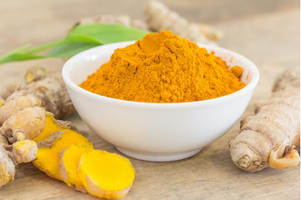
Ayurvedic treatment for knee and joint pain
It all starts with dull aching in the back of the neck. You believe it could a sprain or a muscle sprain due to long screen hours. You may take a break from your daily schedule and get some rest. This will give some relief however, in most cases the soreness returns almost quickly. Down the line, you will slowly learn to endure the pain, accept it as part of aging and continue to live along with it.
How often have you realized this pain could be an indicator of a bigger problem? Pain is an uncomfortable sensation brought on by severe or injurious stimuli. The body's instinct to pain is to withdraw. A person's pain encourages them to leave a harmful circumstance that they assume is a trigger of pain. This instinct is done to safeguard a damaged bodily component while it recovers and to prevent similar situations in the future. When the stimulus is eliminated from the equation, the discomfort usually disappears. However in cases when pain continues to remain despite the trigger removal, one must analyze if there is an issue with the body's ability to cure itself.
Ayurvedic treatment for relief from joint pain easily
Ayurveda is an ancient science focused on the principles of harmony and balance inside the human body and also between the body and its surroundings. Our body, according to Ayurveda, is a harmonic amalgamation of various parts that co-exist and allow us to participate in our daily activities. The joints in our bodies are the links between two bones that allow us to move around. However, there are a number of things that can cause serious difficulties and damage to our joints, resulting in the common complaint of joint pain, which can impair our ability to move.
According to Ayurvedic theory, diseases in the body are caused by an imbalance in the optimal levels of the three doshas or tridoshas: Vata, Pitta, and Kapha doshas. Any such imbalance can obstruct the passage of prana (the life energy) and disrupt the body's nutritional circulation. Joint discomfort, for example, can be caused by a variety of factors. Physical damage, general wear and tear of the joints, or an underlying disease can be the causes of joint pain.
Joint discomfort is caused by an imbalanced Vata Dosha in our bodies, according to Ayurveda. The Vata Dosha is in charge of all mental and physical movements. It is also responsible for blood circulation, body waste elimination, and breathing. The accumulation of Ama, an undigested metabolic toxin caused by slowed metabolism, causes an imbalance in the Vata Dosha's ideal levels. The presence of a high level of Ama in our joints is the cause of joint pain and stiffness.
Joint Pain Causes
Joint discomfort can be caused by underuse of joint muscles due to restricted or limited body movement, or overuse due to severe physical activity, sprains, or strains. Virus infections, on the other hand, can make joint mobility unpleasant. Chronic joint discomfort, which can be caused by arthritis, is a cause for concern. Arthritis is one of the most common causes of joint pain in adults. Arthritis is a chronic inflammatory illness that produces pain in the joints and surrounding tissues, which gets worse as you get older. Osteoarthritis and Rheumatoid arthritis are the two most frequent kinds of arthritis in people.
Difference between Osteoarthritis & Rheumatoid Arthritis
The most prevalent type of arthritis is osteoarthritis. Osteoarthritis is caused by the wear and tear of cartilage over a long period of time. Osteoarthritis develops gradually, generally in middle age, and affects millions of people around the world. Rheumatoid arthritis is another type of persistent arthritis that produces joint discomfort and swelling. It's an autoimmune illness in which the body's immune system attacks the joint lining, resulting in swelling and inflammation.
Rheumatoid Arthritis is otherwise called AamaVata in Ayurveda wherein the Vata dosha is vitiated. The accumulation of ama, a biological toxin that collects within the joints, is known as AamaVata. Joint discomfort, swelling, and swelling arise from the progressive accumulation of ama between the body's joints. Furthermore, it simultaneously targets various joints in the hands, wrists, and knees.
Ayurveda Treatment For Arthritis
Joint discomfort affects millions of people around the world, whether it is chronic or minor. It may begin as a minor ache but it can soon escalate into a chronic condition. As a result, you must take the necessary precautions and care to ensure the health and correct functioning of your joints. For joint discomfort or pain management, Ayurveda has a variety of natural medicines and herbal mixes.
Turmeric for Arthritis
Turmeric, also known as Haldi, is a bright yellow spice is one of the key ingredients used in Ayurvedic medicines. Turmeric contains curcumin, which has anti-inflammatory, antioxidant, and anti-cancer effects that can help with joint discomfort. Its anti-inflammatory qualities are very beneficial for people with rheumatoid arthritis, a condition in which the body's immune system attacks itself, resulting in joint inflammation and pain. It also improves joint flexibility and support, making it an excellent treatment for knee discomfort. Turmeric is available in the form of turmeric powder or as a supplement in the form of capsules or ayurvedic pills for joint care.
Ginger for Joint Pain
Another often used and underrated spice is ginger which can greatly reduce joint pain. Ginger extract had a statistically significant effect on reducing symptoms of osteoarthritis of the knee, according to a study conducted by R D Altman and KC Marcussen in 2001. Ginger, like turmeric, has anti-inflammatory qualities that help in relieving joint pain and also improve overall joint health. Regular ingestion of these spices can reduce the damages caused by aama in the joints and also restores the Vata Dosha to its appropriate levels. Ginger is a common herbal medicine that can be eaten as a spice, natural extract, herbal tea, or pills.
Special Ayurvedic oils to treat Arthritis pain
For ages, Ayurvedic oils have been used for their therapeutic properties. Abhyanga, or full-body oil massages using heating oil that is concoctions of different herbs, relaxes the body and mind while dramatically alleviating bodily pains.
- Jambeera Thailam is a holistic blend of natural potent herbs and spices including lemon, ginger, and turmeric cooked in sesame seed and coconut milk base oil. Abhyanga, done with Jambeera Thailam, can help relieve weary muscles and support joint health by reducing pain, stiffness, and inflammation in the joints. It also increases shoulder joint strength and movement. In addition, the anti-inflammatory qualities of this unique mix of lemon, turmeric, and ginger are beneficial to patients with rheumatoid arthritis.
- Karpooradi Thailam is a traditional oil made with camphor in a sesame oil base that has traditionally been used to keep muscles and joints in good shape. Camphor is a natural lubricant that soothes joint and muscular discomfort. Abhyanga, when combined with Karpooradi Thailam, can help to relax muscles, keep them flexible, and balance muscle strength. This natural Ayurveda oil can help relieve pain caused by osteoarthritis while also giving a calming effect on the body and mind. This ancient oil lowers congestion, increases blood circulation, and also naturally cures migraine discomfort in addition to treating joint pain.
- Dashamula is another important ayurvedic medicine used for arthritis. It is made from 10 herbs- Patala, Gambhaari, Brihati, Shalparni, Shyonaak, Gokharu, Kantkaari, Agnimanth, Bilva, and Prishniparni. It treats arthritic symptoms like swelling and joint pain by acting as an analgesic, antioxidant, and pain reliever. Dashamula is available in the form of ayurvedic massage oil or as a powder.
The ayurvedic word Nidana Parivarjana (avoidance of causative factors) is regarded as the first step in the treatment of any disease. As a result, including preventive measures into your daily routine, or dinacharya, is a fool-proof way to ensure overall health and wellbeing.
Ayurveda has a variety of remedies and lifestyle practices for preventing joint discomfort. Healthy habits include frequent exercise, avoiding tobacco products, eating a well-balanced diet, and maintaining a healthy body weight will help you avoid joint discomfort and other issues. Apart from these routine exercises, one should include ayurvedic herbal treatments and ingredients in their diets in the form of tablets, capsules, herbal teas, or powders for daily intake. Finally, abhyanga massages with ayurvedic oils should be performed on a regular basis to ensure joint flexibility, stability, and smooth movement.
At Ayurveda Living, we have Ayurvedic Practitioners and Doctors who have tremendous knowledge and hands-on expertise in successfully treating Arthritis and managing joint pains through the basic principles of Ayurveda. Browse for a practitioner near you to book your appointment now! Find Ayurveda Practitioners near you
Note: The information in this article is intended for your educational use only and is not a substitute for professional medical advice, diagnosis, or treatment. Always seek the advice of your physician or other qualified health providers with any questions you may have regarding a medical condition and before undertaking any diet, supplement, fitness, or other health programs.





